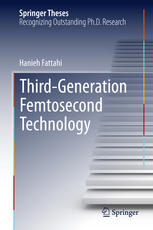

Most ebook files are in PDF format, so you can easily read them using various software such as Foxit Reader or directly on the Google Chrome browser.
Some ebook files are released by publishers in other formats such as .awz, .mobi, .epub, .fb2, etc. You may need to install specific software to read these formats on mobile/PC, such as Calibre.
Please read the tutorial at this link. https://ebooknice.com/page/post?id=faq
We offer FREE conversion to the popular formats you request; however, this may take some time. Therefore, right after payment, please email us, and we will try to provide the service as quickly as possible.
For some exceptional file formats or broken links (if any), please refrain from opening any disputes. Instead, email us first, and we will try to assist within a maximum of 6 hours.
EbookNice Team

Status:
Available4.3
30 reviewsThis thesis offers a thorough and informative study of high-power, high-energy optical parametric chirped pulse amplifications systems, the foundation of the next generation of femtosecond laser technology. Starting from the basics of the linear processes involved and the essential design considerations, the author clearly and systematically describes the various prerequisites of the nonlinear optical systems expected to drive attosecond physics in the coming decade. In this context, he gives an overview of methods for generating the broadband and carrier-envelope-phase stable seed pulses necessary for producing controlled electric-field waveforms in the final system; provides a guide to handling the high-power, high-energy pump lasers required to boost the pulse energy to the desired operating range; describes the design of the nonlinear optical system used to perform the amplification, including modes of operation for ultra-broadband infrared-visible pulses or narrowband (yet still ultrafast) pulses tunable over multiple octaves; and finally presents a prospective high-energy field synthesizer based upon these techniques. As such, this work is essential reading for all scientists interested in utilizing the newest generation of ultrafast systems.